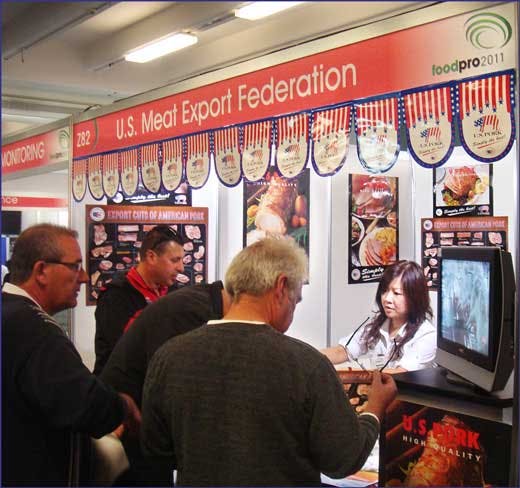Foodpro 2011: U.S. Pork Showcased in Rapidly Growing Oceania Market
Published: Jul 22, 2011
Held every three years, Foodpro is one of the longest running food industry trade shows in Australia, providing an excellent platform for those in the food processing industry to interact with customers from Australia, New Zealand and the surrounding region. Foodpro 2011 proved to be bigger and better than ever, drawing a record number of exhibitors and outstanding attendance – more than 8,000 over four days – to the Sydney Convention and Exhibition Centre, making it the largest food processing exhibition in the entire Asia Pacific region.

With support from the Pork Checkoff and the USDA Market Access Program (MAP), USMEF participated in Foodpro for the first time. The event showcased the latest in food manufacturing products and technology, attracting many small processors who turn to imported pork for their raw material needs, as well as the importers and brokers who serve them. These attendees were the main target audience for USMEF, and they showed strong interest in the information provided on U.S. pork.
To give visitors a better understanding of the U.S. pork industry and the products it has to offer, USMEF played the video, U.S. Pork, Production & Harvest - a Commitment to Excellence throughout the show. Promotional materials and brochures featuring both standard wholesale pork cuts and processed pork items were also distributed.
“The response to USMEF was very positive, generating a lot of genuine interest and promising inquiries from processors in Australia and a large New Zealand delegation,” said USMEF-ASEAN Director Sabrina Yin. “This event presented a unique opportunity to reach a large number of targeted customers here in the Oceania region.”
The next Foodpro will be held in 2014, also in Sydney. Through May, U.S. pork exports (including variety meat) to the Oceania region totaled 31,700 metric tons (about 70 million pounds) valued at just over $100 million – an increase of 16 percent in volume and 52 percent in value over last year’s pace. Australia accounts for most of this trade activity, but exports to New Zealand are up more than 40 percent in value to $8.7 million.
